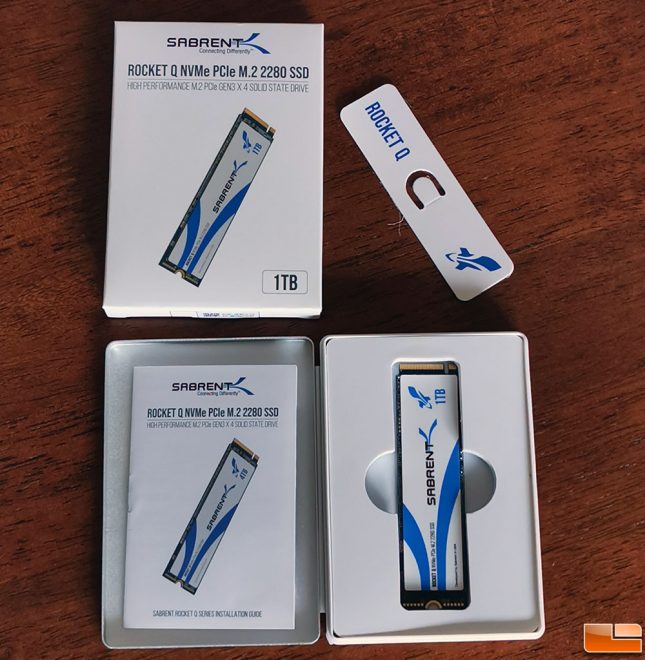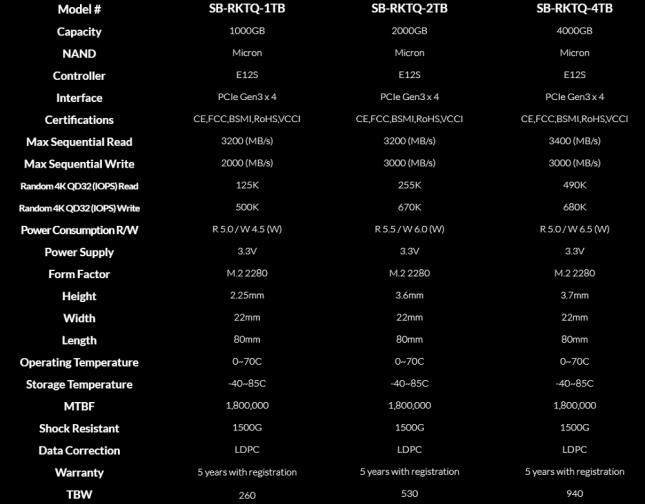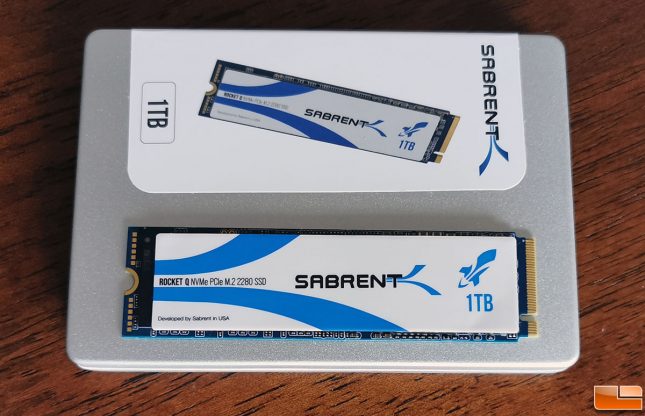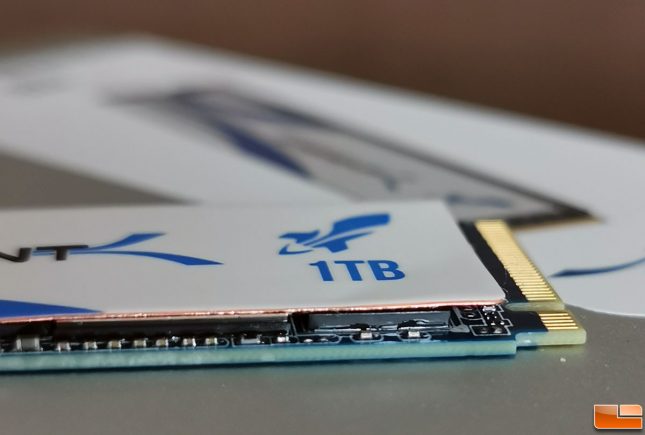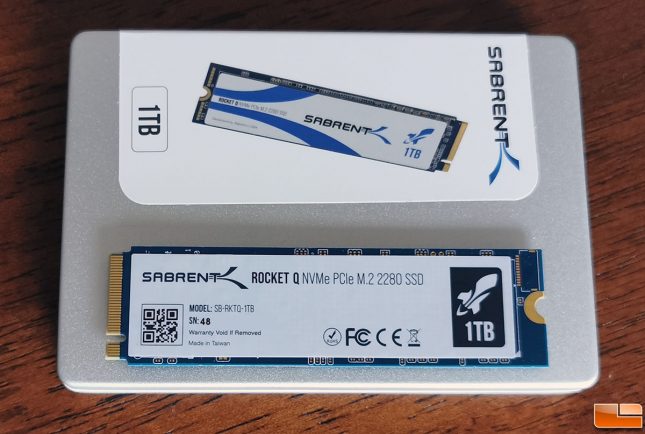Sabrent Rocket Q 1TB SSD Review – QLC NAND Flash
How The Cheapest 1TB NVMe SSD Performs – Rocket Q 1TB Tested
Earlier this week we took a look at the Sabrent Rocket NVMe SSD series that uses TLC (Triple-Level Cell) NAND Flash memory that stores three bits of data per cell. Today, we’ll be taking a look at the Sabrent Rocket Q NVMe SSD series that uses QLC (Quadruple-Level Cell) NAND Flash memory that stores four bits of data per cell. QLC (Quadruple Level Cell) stores more bits per cell than its predecessors, enabling larger drive capacities at more affordable price points. The smallest Sabrent Rocket Q NVMe PCIe 3.0 x4 M.2 2280 SSD is 1TB in capacity and can be bought for $110. The Rocket Q is also available in 2TB or 4TB capacity models if you have larger storage needs. The endurance on QLC drives is not as high as you’ll find on TLC drives, but the performance numbers look pretty good as the 4TB model can reach speeds of up to 3,400 MB/s read and 3,000 MB/s write.
Sabrent is using the Phison E12S controller paired with Micron 3D QLC NAND Flash memory on the Rocket Q SSD series. On their website they mention that the Rocket Q uses the Sabrent RKT 303 controller, but that is just some fancy marketing talk for what is really the Phison E12S controller. Performance on each of the three Rocket Q drives varies greatly depending on what capacity drive that you are purchasing. Right now the Sabrent Rocket Q is being offered in three different sizes; 1TB ($109.99), 2TB ($219.99) and a 4TB model that has yet to come to market. The sequential performance of the 1TB model is 3,200 MB/s read and 2,000 MB/s write with Random 4K performance of up to 125,000 IOPS Read and 500,000 IOPS Write. Moving up to the 2TB model you’ll find the sequential performance increase up to 3,200 MB/s read and 3,000 MB/s write with Random 4K performance of up to 255,000 IOPS Read and 675,000 IOPS Write. So, not only do you double your storage space when moving up to the next capacity, but you’ll also receive better performance in some areas.
We’ve included the general performance numbers from the Sabrent website below, so you can see the different power and performance numbers for each drive capacity.
All of the Sabrent Rocket series drives are backed by a 5-year warranty, but you have to register your drive with Sabrent to get that warranty length. If you do not register your drive you’ll end up with a 1-year warranty. You have 90-days to register the Sabrent Rocket drive that you purchase to get the 5-year warranty period. We don’t like it when companies make you jump through additional hoops to get a longer warranty period, but this is likely one of the ways Sabrent helps keep pricing down as most people likely don’t register their purchase.
- SB-RKTQ-1TB – 260 TBW
- SB-RKTQ-2TB – 530 TBW
- SB-RKTQ-4TB – 940 TBW
So, you are looking at 260 TBW for the Sabrent Rocket Q 1TB model and that comes out to being about 142 GB of drive writes per day over the course of five years. That seems like a decent number of writes, but the Sabrent Rocket 1TB drive (TLC NAND Flash) has an endurance rating of 1,665 TBW. That means the Sabrent Rocket 1TB drive has an endurance rating that is 6.4x larger! The endurance rating is one of the key differences between the QLC based drives coming to market and those that are running TLC NAND Flash.
The drive that we were sent out to review was the Sabrent Rocket Q NVMe PCIe M.2 2280 1TB SSD that is sold under part number SB-RKTQ-1TB. This drive can be purchased from Amazon for $110.99 shipped, which comes out to be around $0.11 per GB. Sabrent uses the standard M.2 2280 ‘gum stick’ form factor and the 1TB model is a single-sided drive as you can see from the images above and below. Sabrent went with a blue PCB for this drive and it doesn’t look bad as it matches the blue on the label.
Speaking of the label, it doubles as a heat spreader since it contains a thin piece of conductive metal inside. So, don’t remove it!
There is another label on the back of the drive that shows the model number, capacity and the serial number. Sabrent doesn’t offer any special software or toolbox with the Rocket series, but it does include Acronis True Image cloning software. If you purchase the Sabrent Rocket Q and want to replace an existing drive you can easily clone it with this free software that can be downloaded right here.
That all said, let’s take a look at some benchmark numbers on our Intel Z390 test platform.

